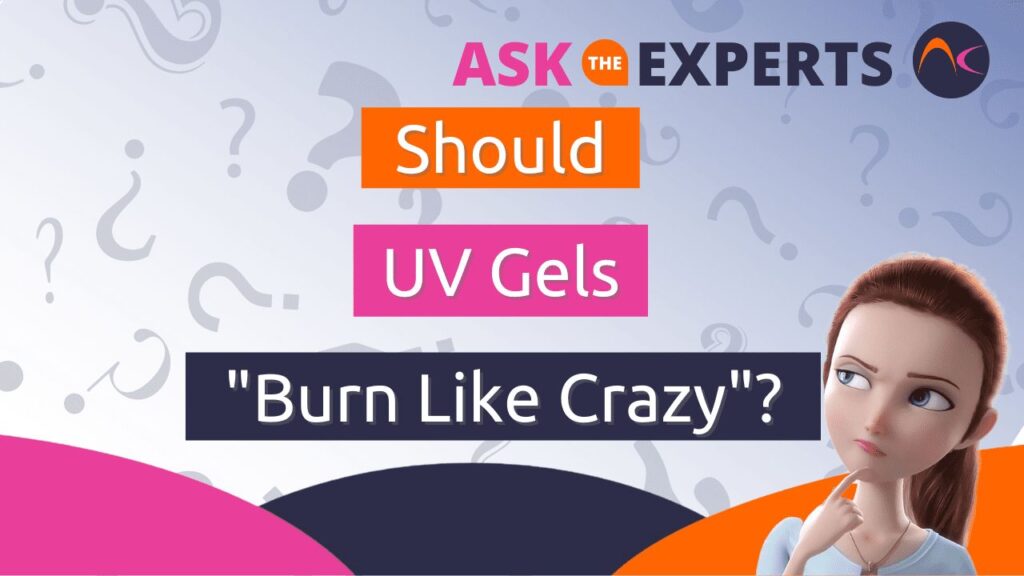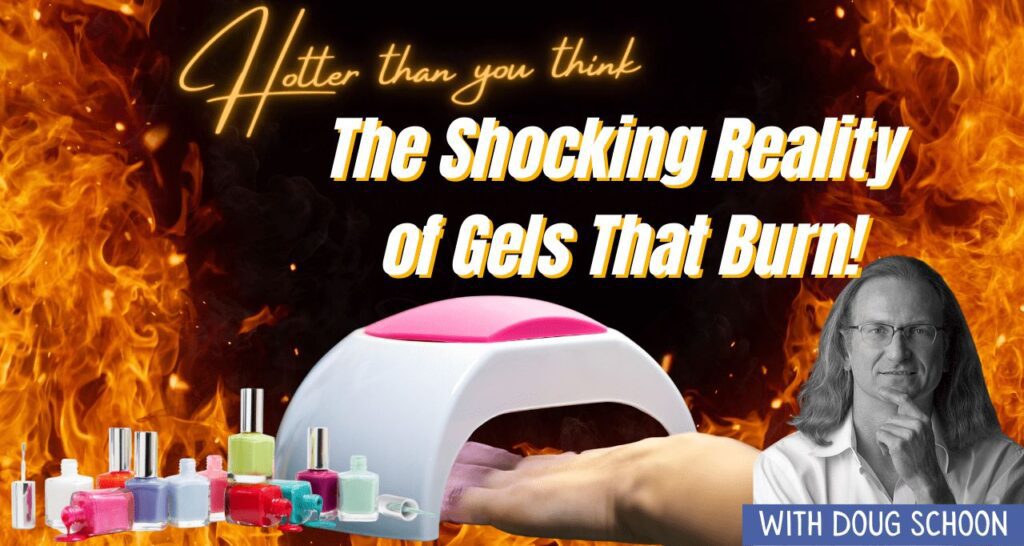Search for answers you are looking for.

Should UV Gels “Burn Like Crazy”?
37.3k Views

Question: If UV gels “burn like crazy” under the UV lamp, students are told that it is because the gel is “bad”? In my opinion, the problem is more related to the way the gel is being used during application. What do you think?”
Answer: I do agree with this. When UV gels are properly applied and cured, they can become warm. However, they are NOT supposed to “burn like crazy”. Of course, this assumes the students are using a quality, brand-named UV gel that is well formulated, and properly applied. And then, of course, cured as directed by the manufacturer in the correct lamp. Manufacturers take steps to ensure their UV gel doesn’t “burn like crazy”. If anyone is getting this amount of excessive heat, then it would seem they are NOT properly applying and/or curing.
Identifying the Burning Sensation in UV Gel Nail Application
Individuals experiencing a burning sensation when applying UV gel may find this article relevant, as it addresses the causes and solutions for this issue. Some common symptoms associated with UV gel application include a burning sensation during or after the process, excessive heat felt on the nails, nail plate separation from the nail bed (onycholysis), increased sensitivity of the nail bed, the risk of nail bed infection, and potential loss of the nail plate if not properly addressed.
To determine if this article can provide the information and guidance needed, refer to the following bullet points for a quick overview:
- Burning sensation during or after UV gel application
- Excessive heat felt on the nails
- Separation of the nail plate from the nail bed (onycholysis)
- Increased sensitivity of the nail bed
- Risk of nail bed infection
- Potential loss of the nail plate if not properly addressed
Causes and Consequences of Excessive Heating in UV Gel Nails
If the UV gel is applied too thickly or cured in an unsuitable nail lamp, then excessive heating may occur. These are the two most common reasons for this to happen. When the “correct” thickness of UV gel is applied, they may become warm. But when applied too thickly, more heat is released, and the nail can become very warm. When one also uses a nail lamp that releases too much UV energy for curing that UV gel, then overheating becomes very likely to occur. That’s because one symptom of over-curing a UV gel is the release of excessive amounts of heat.
Understanding and Managing Onycholysis in UV Gel Nails
This type of burning can cause the nail plate to separate from the nail bed. This creates an open space, which is called onycholysis. Once onycholysis occurs, the nail bed may later become infected. It can eventually lead to complete loss of the nail plate unless proper care is taken to reverse the condition. Once onycholysis occurs, the nail plate should be kept short and clients will have to be careful not to injure them until they can grow out again. When the hyponychium seal under the free edge is reestablished, then the nail plate should continue to grow normally. Depending on the severity of the onycholysis, this condition may take one or two months to resolve itself. During that time, clients should be instructed to wear gloves, keep their nails clean and dry, and do everything they can to prevent catching the nail on objects which could pry the nail plate back, and lead to even more nail bed separation. Keeping the nail plate short will help prevent additional damage.
Preventing Friction Burns
The other possible reason the UV gel may feel too hot could be because the nail bed has been friction burned by overly-aggressive filing techniques. This is often done when nail technicians use heavy-handed filing techniques. In other words, using too much downward force on the nail file. When an electric file is improperly used on the nail plate, the result can be friction burns to the nail bed. Friction burns cause the nail bed to become super-sensitive to even normal and acceptable levels of warming that normally wouldn’t be a concern. The client’s natural nails should be gently and carefully filed and not treated roughly while being filed.
Best Practices for Applying and Curing UV Gels
When it comes to achieving optimal results with UV gel nail enhancements, it is crucial to follow certain best practices. One important guideline is to apply UV gels in thin layers, ensuring a proper cure and avoiding potential issues. By applying the gel in thin layers, it allows for better control over the curing process, minimizing the risk of excessive heat generation. This method promotes a more even distribution of UV energy during the curing phase, leading to a more stable and durable nail enhancement.
Furthermore, using the correct UV nail lamp is essential for achieving a proper cure. Not all UV nail lamps are created equal, and using an inappropriate lamp can result in suboptimal curing outcomes. Each UV gel product typically comes with specific instructions regarding the recommended UV lamp to use. Following these guidelines ensures that the gel is exposed to the appropriate wavelength and intensity of UV light, facilitating a complete and thorough curing process.
Properly curing the UV gel is of utmost importance as it directly impacts the durability and longevity of the nail enhancement. Inadequate curing can lead to various issues such as premature chipping, peeling, or even complete detachment of the UV gel from the natural nail. By adhering to the practice of applying thin layers and using the correct UV nail lamp, nail technicians can ensure a proper cure, resulting in beautiful, long-lasting UV gel nail enhancements.
Be sure to checkout our latest article – The Shocking Reality of Gels that Burn

